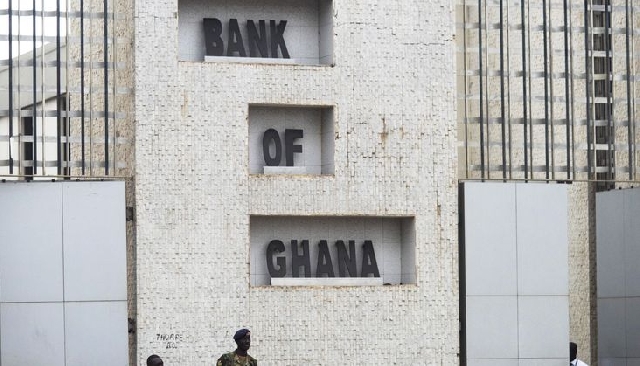Banks' NPLs deteriorate from 14.3% to 18% – BoG
 Bank of Ghana
Bank of Ghana
The banking industry’s Non-Performing Loans (NPL) ratio deteriorated to 18.0 per cent in April 2023 from 14.3 per cent in April 2022, reflecting higher loan impairments and elevated credit risks, Bank of Ghana governor Ernest Addison has said at the monetary policy committee meeting held on Monday, 22 May 2023.
He said the industry’s liquidity indicators have also improved following the implementation of the revised Cash Reserve Requirement.
The 2022 audited financial statements of banks, according to Dr Addison, "reflected the full impact of the Domestic Debt Exchange Programme (DDEP) and the challenging operating environment that prevailed in the year".
"Most banks reported significant losses on the back of the mark-to-market valuation losses on their respective holdings in Government of Ghana bonds following the implementation of the DDEP", he said.
Other losses, Dr Addison added, "were due to higher impairments on loans and rising operating costs".
He said the industry posted before-tax losses of GH¢8.0 billion in 2022 compared with a profit of GH¢7.4 billion recorded in 2021.
After-tax loss was GH¢6.6 billion in 2022 relative to profit after-tax of GH¢4.8 billion in 2021, he added.
The main profitability indicators, namely, return-on-assets and return-on-equity all turned negative in 2022 because of the industry’s loss position.
The 2022 audited financial statements of banks also pointed to some impairments in capital levels, although most banks posted Capital Adequacy Ratios (CAR) above the 10 per cent regulatory minimum at end-December 2022, he noted.
"This was attributed to the effect of the roll-out of the temporary regulatory reliefs extended to the banks to cushion them against the impact of the DDEP as was done at the onset of the pandemic", he explained.
In the first four months of this year, Dr Addison said "prudential data show some turnaround in the banking sector’s performance following the conclusion of the DDEP, and following consensus reached among stakeholders on the treatment of losses arising from same".
He said "banks continue to rebalance their portfolios in response to the impact of the DDEP on their balance sheet shifting away from medium-to-long term investments to short term investments and increases in new loans".
In general, he noted, "the banks returned to making profits in the first four months of 2023, broadly reflecting higher operating income".
Dr Addison said "loan loss provisions also increased relative to a year ago, due to the pickup in credit growth and elevated credit risks".
"These developments culminated in a 47.0 per cent increase in profit-before-tax in April 2023 compared with 26.3 per cent growth recorded during the same period a year ago", he added.
Similarly, he said "the industry’s net income or profit-after-tax increased to GH¢2.8 billion from GH¢1.9 billion, representing 45.8 per cent increase in April 2023".
Also, he reported that the industry’s return-on-assets increased to 5.5 per cent from 4.7 per cent, while return-on-equity rose to 36.3 percent from 22.3 per cent.
Key financial soundness indicators, he mentioned, "remained strong on the back of the impact of the regulatory reliefs".
The industry’s Capital Adequacy Ratio, adjusted for the regulatory reliefs, was 14.8 per cent in April 2023, higher than the revised prudential minimum of 10 per cent, but lower than the 21.3 per cent recorded in April 2022, the governor said.
He indicated that the decline in the ratio highlights the increase in risk-weighted assets of banks from the impact of exchange rate changes and some losses on mark-to-market investments.
Read the MPC's full statement below:
Source: Classfmonline.com
Trending Business

Finance Minister vows lasting economic stability and lower food prices in meeting with FABAG
08:46
Bawumia’s Gold for Reserve Programme is anchoring the Cedi – Kofi Bentil
13:27
DVLA opens new office in Adentan, CEO expresses gratitude to all stakeholders
08:27
President Mahama delivers on 24-hour economy promise within first 120 days
01:34
Gov't inaugurates task force to oversee establishment of Ghana’s national airline
13:57
NPA boss heaps praise on Finance Minister and BoG for stabilising Cedi, fuel prices
11:18
President Mahama sets $10 billion target for non-traditional exports by 2030
03:34
Hand over Saglemi housing project to TDC- Parliamentary Select Committee to gov't
04:51
CEMSE calls for urgent review of Ghana’s upstream petroleum laws to boost investment
14:55
Gov't urged to act fast on the completion Pokuse-Mayera affordable housing project
10:25




